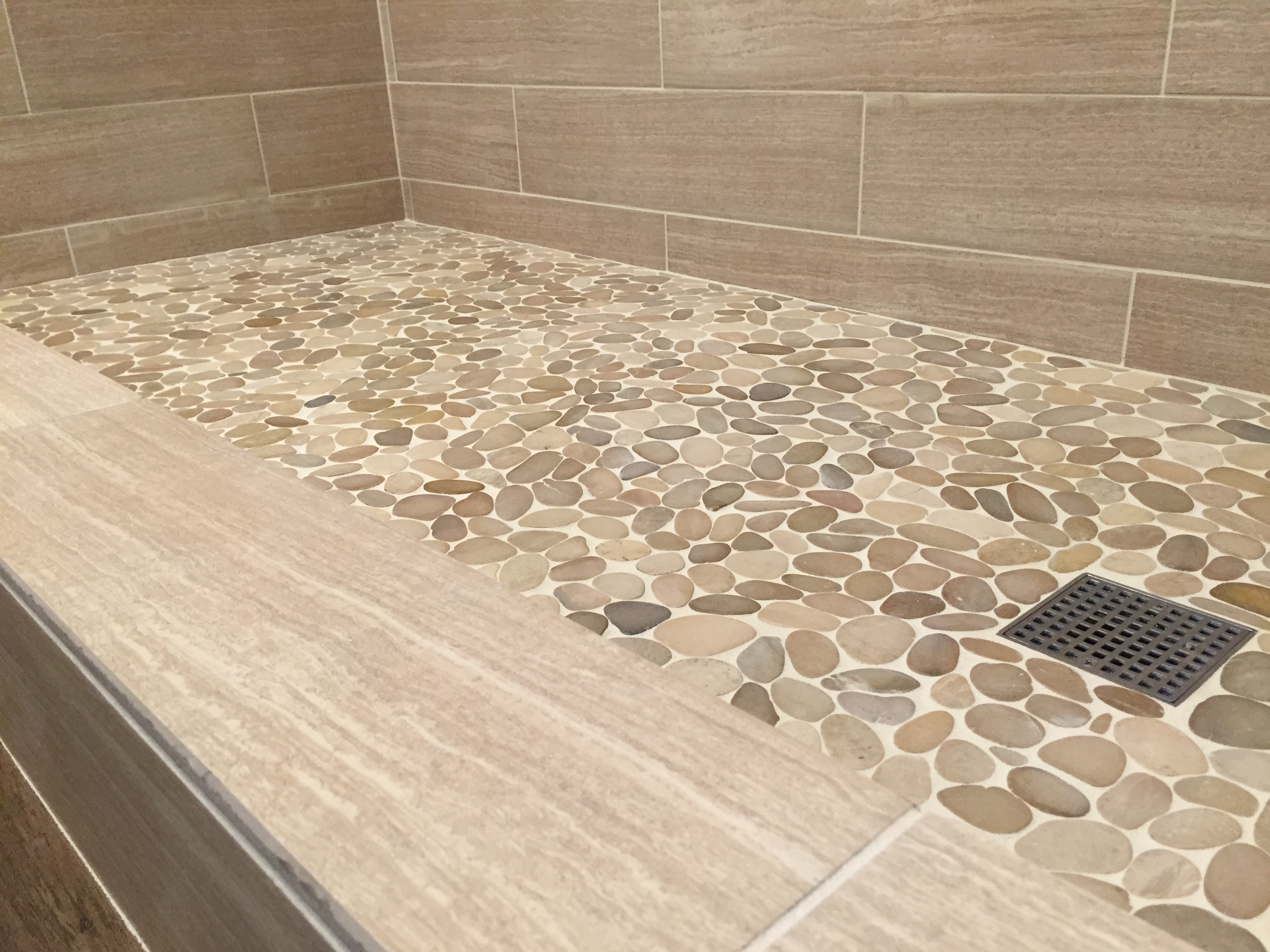Slip-Proof Flooring Features and Considerations: Slip Proof Bathroom Flooring

Choosing the right flooring for your bathroom is crucial, especially when considering safety and preventing accidents. Slip-proof flooring is essential for reducing the risk of falls, particularly in areas prone to moisture and water spills. Understanding the features and considerations involved in selecting slip-proof bathroom flooring will help you make an informed decision that prioritizes safety and aesthetics.
Coefficient of Friction (COF)
The coefficient of friction (COF) is a crucial factor in determining the slip-resistance of any surface. It measures the friction between two surfaces in contact, in this case, the bathroom floor and your feet. A higher COF indicates greater friction, making the surface less slippery. The National Floor Safety Institute (NFSI) recommends a minimum COF of 0.5 for wet bathroom floors, while 0.6 is ideal for high-traffic areas.
Surface Texture
The surface texture of bathroom flooring plays a significant role in slip resistance. Textured surfaces, such as those with grooves, ridges, or patterns, provide better traction and grip compared to smooth surfaces. These textures help to prevent water from pooling and creating slippery conditions.
Water Resistance
Bathroom flooring must be highly water-resistant to withstand the constant exposure to moisture and spills. Water-resistant materials like ceramic tiles, porcelain tiles, and vinyl flooring are commonly used in bathrooms. These materials resist water absorption, preventing warping, mold growth, and other water-related issues.
Foot Traffic
The level of foot traffic in your bathroom is a crucial consideration when selecting slip-proof flooring. High-traffic areas require flooring with greater durability and slip resistance. For example, families with young children or elderly individuals may opt for more slip-resistant options like textured tiles or non-slip vinyl flooring.
Bathroom Size
The size of your bathroom influences the type of flooring you can install. Smaller bathrooms might benefit from lighter-colored flooring to create an illusion of spaciousness, while larger bathrooms allow for more design flexibility. Consider the overall aesthetic and how the flooring will complement the bathroom’s size and layout.
Personal Preferences
Ultimately, personal preferences play a vital role in choosing bathroom flooring. Consider your desired style, color, and budget. Slip-proof flooring comes in various styles and materials to suit different tastes. For example, if you prefer a natural look, you could opt for stone tiles or wood-look vinyl flooring.
Proper Installation and Maintenance
Proper installation is essential for maintaining the slip-resistance of bathroom flooring. Ensure the flooring is installed correctly by a qualified professional, following the manufacturer’s instructions. Regular maintenance is also crucial. Clean spills promptly and avoid using harsh chemicals that could damage the flooring’s surface.
Creating a Slip-Proof Bathroom Environment

Designing a bathroom that prioritizes safety is crucial, especially for individuals with mobility challenges or young children. A well-planned layout and thoughtful safety measures can significantly reduce the risk of slips and falls.
Bathroom Layout Considerations, Slip proof bathroom flooring
A well-designed bathroom layout plays a critical role in minimizing slip hazards. The following guidelines can help create a safer bathroom environment:
- Minimize Wet Areas: Designate a specific area for showering or bathing, ensuring adequate drainage and minimizing the spread of water to other parts of the bathroom. This can be achieved by using shower curtains or doors that effectively contain water within the designated area.
- Spacious Walkways: Ensure that walkways within the bathroom are wide enough to accommodate movement without the need to squeeze past obstacles. This reduces the risk of bumping into objects or losing balance, especially when carrying items.
- Eliminate Sharp Corners: Round off sharp corners on furniture, fixtures, and walls to prevent accidental bumps and injuries. This is particularly important in areas where people may be moving quickly or have limited mobility.
- Avoid Clutter: Keep the bathroom free of clutter and unnecessary items that could obstruct walkways or pose a tripping hazard. This includes towels, toiletries, and other personal items.
Additional Safety Measures
Beyond layout considerations, additional safety measures can further enhance slip resistance in the bathroom:
- Non-Slip Rugs: Place non-slip rugs in areas prone to moisture, such as near the bathtub or shower. These rugs provide extra traction and reduce the risk of slipping on wet surfaces. Ensure the rugs are secured to the floor to prevent them from shifting or becoming a tripping hazard themselves.
- Grab Bars: Install grab bars near the bathtub, shower, and toilet to provide support and stability. This is especially beneficial for individuals with mobility issues or those at risk of falling. Grab bars should be securely mounted to the wall and able to withstand significant weight.
- Proper Lighting: Adequate lighting is crucial for visibility and safety. Ensure that the bathroom is well-lit, particularly in areas where water is likely to be present. Consider using brighter bulbs, multiple light sources, or motion-activated lights to enhance visibility.
Maintaining a Clean and Dry Bathroom
Regular maintenance plays a vital role in preventing slips and falls:
- Regular Cleaning: Regularly clean the bathroom floor, walls, and fixtures to remove dirt, soap residue, and other potential slip hazards. This includes wiping down surfaces with a cleaning solution and ensuring proper drainage.
- Promptly Dry Surfaces: After showering or bathing, promptly dry the floor and surrounding areas. Use a squeegee to remove excess water from the shower walls and floor, and ensure the shower mat is also dried.
- Avoid Spills: Be mindful of spills and promptly clean them up. Spilled water or liquids can create slippery surfaces, increasing the risk of falls.
